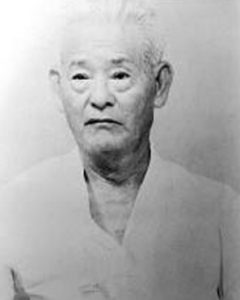The History of Shorin-ryu
Shorin-Ryu is one of the two original Karate styles formally systematized in Okinawa and is believed to have had the most influence on the development of all modern Karate systems.
Following its emergence in Okinawa, Shorin-Ryu broke into three main branches being: Shobayashi-Ryu (small forest school) first taught by Chotoku Kyan; Kobayashi-Ryu (young forest school) first taught by Choshin Chibana; and Matsubayashi-Ryu (pine forest school) first taught by Shoshin Nagamine. All three names refer to the original Shaolin Temple in China and all three are considered forms of Shorin-Ryu or ‘Shaolin Way’.
Before examining these three splinter groups, it is necessary to trace the origins of previous masters, Soken Matsumura and Yasutsune Itosu, who trained many of the men who became founders of Shorin-ryu.
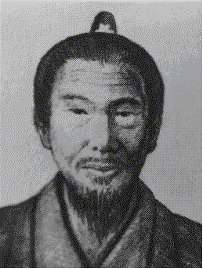
Tode Sakugawa
Tode Sakugawa (1733-1815) became a prominent figure in Okinawan Martial Arts. In fact, he is considered to be the first true teacher of Okinawan Karate. Sakugawa’s martial art was a mixture of Shuri-Te and Chinese Kenpo. In 1756, Sakugawa became a student of the Chinese military envoy Kusanku (also Kushanku). Kusanku was a highly skilled Kenpo master and famous for his fighting ability. Kusanku did many things which influenced Shuri-Te’s and ultimately Shorin-Ryu’s development. He taught many native Okinawans including Chatan Yara and Shionja of Shuri. He brought some of his students from China to Okinawa and they spread the Chinese style on Okinawa. In addition, it is reported that Kusanku introduced a maneuver whereby the closed fist was held in a chambered or ready position along the side of the torso (hikite)and then from this position a punch was thrown, corkscrewing it in karate fashion, toward the intended target. Kusanku is also credited with the introduction of a type of kumite or sparring to Okinawan karate. This kumite was referred to as Kumiai Jutsu or fighting technique.
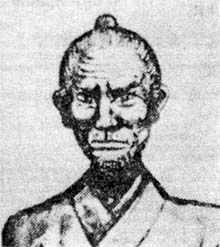
Sokon “Bushi” Matsumura
Sokon Matsumura’s father had been a political leader in Okinawa and had befriended Kanga ‘Tode’ Sakagawa often referred to as the Father of Okinawan Karate and founding father or Shuri-te. As the elder Matsumura was on his death bed, he asked Sakagawa to raise his three-year-old son. So, at a young age, Sokon Matsumura joined residence and began to train with Sakagawa. Like his teacher before him, Matsumura developed a love for martial arts knowledge. Because of this love, his teacher gave him the nickname “bushi” which means warrior. Matsumura also trained with Kusanku and, like his teacher, traveled to China for further study. Because of his skill, he was appointed to the position of head bodyguard for the Okinawan royal family through three generations of kings. He was the first to organize his knowledge into a formal system which he called Shuri-te. He contributed three main kata- Seisan, Passai (Dai), and Naihanchi Shodan. He also trained many of the men who became the masters and founders of the current styles of Shorin-ryu.
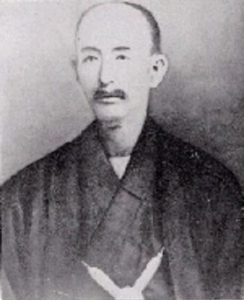
Nabe Matsumura
Nabe Matsumura brought the old Shorin-ryu secrets into the modern age. His name does not appear in many karate lineage charts According to Hohan Soken (1889-1982), the purest teaching of Matsumura’s Shorin Ryu was carried on by Matsumura Nabe (c.1860-1930). He received training in the family style of Matsumura Shorin Ryu which also included the secret techniques of the white crane. The white crane system was reputed to be a secret family style that was only taught to immediate family members. In his later years, Nabe Matsumura was referred to as Nabe Tanme or “old man” Nabe. He was known to be a stern and disciplined teacher. He had only one student, Hohan Soken. It is said he was one of the top karate men of his time. He passed on his menkyo kaiden to his nephew, Soken Hohan.
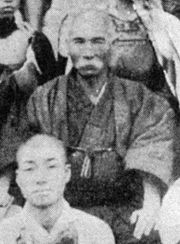
Yasutune “Anko” Itosu
Yasutsune “Anko” Itosu trained under two teachers – Sokon Matsumura and Tomari-te’s Kosaku Matsumora. Soken Matsumura encouraged Itosu to spread the teaching of Shuri-te which, at the time, was not received well by his peers for much of te’s teachers restricted who they would teach or kept it a family affair.
He started by introducing the teaching into the Okinawan public school system, but found that the traditional katas were to difficult for the younger students. So, he developed the 5 Pinan (peaceful mind) katas which are still taught today. He was given the nickname “Anko” or “iron horse” because of his ability root himself so solidly during kata. He also is credited with introducing the Rohai and Chinto katas.
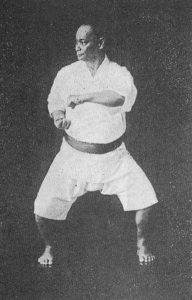
Choki Motobu
1870 Chotoku Kyan, born December, in the Okinawan village of Shuri. Chotoku was the third son of Chofu Kyan, the Chamberlain of King Sho Tai – the last king of Ryukyu Islands (Okinawa).
As the third son, Choki’s education was not a top priority. He aquired the basics of Ti on his own and regularly practiced with his makiwara board. As a young man, Motobu would visit Tsuji and challenge other strong young men. His martial art took a different path than that of his family’s.
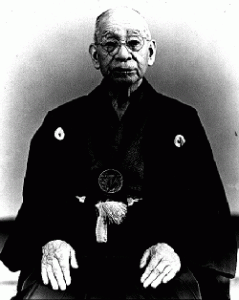
Choshin Chibana
Choshin Chibana, founder of the Shorin-ryu splinter Kobayashi-ryu, began his training under Yasutsune Itosu. With the growth and development of te, he wanted to differentiate his from other systems and so named it Kobayashi-Ryu.
Chibana was an instructor for the Shuri police department and became the first president of the Okinawan Karate-do Renmei. He was also first president of the Shorin-ryu Karate-do Kyokai and received the 4th Order of Merit from the Emperor for his contribution to martial arts. He was also the first to use the name Shorin-ryu.
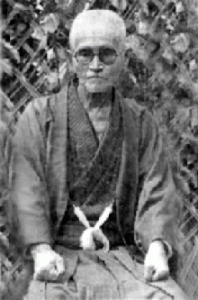
Chotoku Kyan
Chotoku Kyan was introduced to martial arts as a young boy in a bid to improve his ill health. His early training was under Soken Matsumura and later with Yasutsune Itosu. He also trained with Tomari-te’s Kokan Oyadomari. Renowned for his speed and ability with the bo, Kyan was never defeated in a challenge, even though he was small in stature. He named his system of Shorin-ryu Shobayashi-ryu.
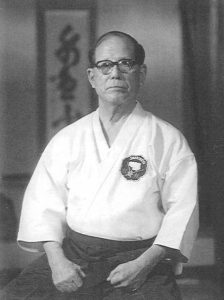
Shoshin Nagamine
Shoshin Nagamine also began his martial arts training to improve his health. He was a student of three prominent sensei named Ankichi Arakaki, Chotoku Kyan and Choki Motobu. Nagamine founded Matybayashi-ryu in 1947, naming the system in honor of Soken Matsumura and Kosaku Matsumora. In a decorated life dedicated to martial arts, Nagamine achieved a 10th degree black belt in karate, a 3rd degree in Kendo and a 1st degree in Judo. He was also on the board of the Zen Okinawan Karate-do Renmei.
